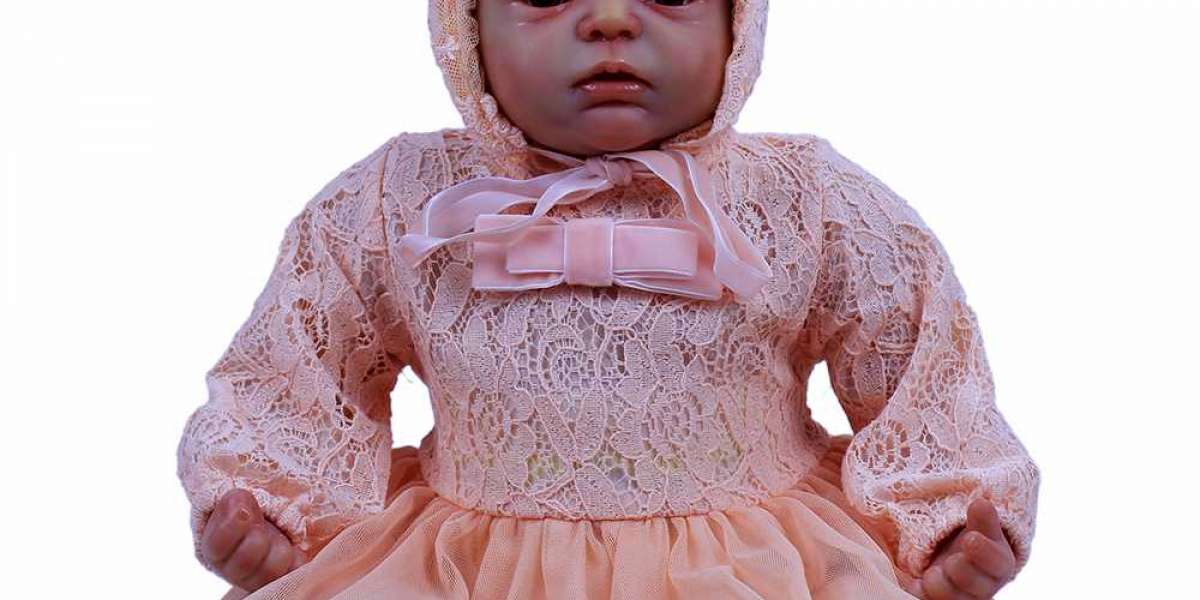The Benefits of Playing With life like baby dolls
The baby doll is a toy that can really help open up and expand a child''s pretend play. Children learn a lot of language through their play and play offers them opportunities to utilize and practice their language and speech skills. Let''s look at just some of the language notions that a baby doll can help teach and encourage: Body Parts: Dolls are FANTASTIC for teaching different body parts: eyes, nose, mouth, ears, hands, fingers, tummy, feet, feet, knees, elbows, etc.. Yes, you can teach these without a baby doll but providing another opportunity to practice labeling this vocabulary helps to generalize the language to other men and women. It helps to teach children that"nose" not only refers to the thing on their face but to all faces. Clothing Labels: Using the doll and its clothes, you are able to teach the names of clothing items like shirts, pants, shoes, socks, jammies, etc.. Basic Concepts: Use infant with other infant toys (bed, blankets) to teach some basic concepts like: prepositions (infant in the bed, infant under the blanket), colors, and size concepts (using different sized dolls). Verbs/Feelings: Use the infant with some other baby toys (bottle, bed, clothing ) to teach verbs/feelings/etc. Like: eat, drink, sleep, sit, stand, hungry, sleepy, hungry, and much more. Answering"wh" questions: You can ask your kid various questions to work on his comprehension of those words while he performs. "Where''s baby?" "What does the infant want to eat?" Social/pragmatic skills: Baby dolls can be a great tool to use to help educate proper social/pragmatic skills. Children can take turns playing different dolls, and they can practice using language to ask questions about the dolls and what they are doing.
Silicone Reborn Dolls are a few of the toys that children have played with. Their earliest use was documented around 100 AD in Greece. There''s good reason for these toys to be so long lasting through history. They are a representation of the child and allow for a child to acquire a greater understanding of themselves as well as those around them. Playing with dolls may provide growth for children, irrespective of gender, while traditional gender roles dictate that dolls are a toy mainly for women. Here playing with dolls can help you child''s development: Social Skills. Playing with dolls solidifies skills that are obtained in a child''s early developmental years. They learn to communicate with one another and collaborate when children play house. By taking care of a doll, they know how to take care of one another.Responsibility. Children are learning responsibility also by learning social skills that are important from an early age. They learn by playing with it how to look after a doll. Learning this skill can help kids learn how to take care of their pets, or siblings understand how to care of the younger siblings. Empathy Compassion.Another important social skill that children learn when playing with dolls is the way to process emotions such as empathy and compassion. Just like caring for their doll teaches responsibility, it teaches them to empathize with people around them and allows them to grow up into caring people. Imagination.Dramatic play, the sort of play that happens when children play with dolls, helps develop a child''s creativity as they experience creative, imagined scenarios with their dolls and other kids. Language. Playing with dolls as well as their friends, kids run for their games into unique and new situations. Communicating between one another can strengthen their language by filling it. Children gain insight, by communicating in this way with their friends.
Children use play to comprehend their world. Doll play helps children: clinic caring and nurturing (socio-emotional)re-enact interactions with their own caregivers, family members, and friends (cognitive reframing) prepare for a sibling (rehearsal). Irrespective of a child''s sex, these skills are all valuable life lessons. In carrying, holding, feeding, and rocking a baby doll, children are practicing being loving to others. They may be modeling how they remember being taken care of as a kid, or how they see adults in their world caring for kids. Just as children copy parents talking on the telephone, working in the kitchen, vacuuming, etc., doll play is just the same. It is children''s way by practicing these events begin to make the world and to understand their own. Play is also. Doing this allows them to increase their comprehension of the events. They are also able to take on the opposite function, which allows them to see things from another''s perspective (SUCH an important skill to get!) . Many times children will enjoy taking on the role in order for them to feel a feeling of control and power. This makes complete sense because kids have very little control over their world (for some necessary and good reasons). Giving a child the chance to have some power and control in play allows them to give it a go in a way.
Removing clothes: Although some clothing items are easier to remove than others (like those baby socks that never remain on their little feet!) , kids gain from trying out it on a doll prior to doing this for themselves. Taking clothes off is usually mastered prior to placing it on and includes removing items such as hat, socks (pulling from the top rather than pulling on the feet ), shoes, top, using a pincer grasp to unzip, pulling down pants, and unbuttoning huge buttons. Putting on clothes: Getting clothing on can be tough and is typically MUCH easier when first practiced on a doll. Some common clothing items children can practice on dolls and themselves comprise placing a hat on their head, zipping with some assistance, putting shoes on, pulling pants up, putting on a shirt, and buttoning large buttons. Using both hands in midline: This skill is expected to emerge around a year and a half and will coincide with the development of skills like holding or zipping/unzipping the ring when pretending to feed it. Feeding: As children play skills develop, so do their self-feeding skills! Playing with a baby doll gives them the opportunity to practice suitably holding and using feeding items such as spoons, bottles, cups, forks, bowls, etc..
Playing with baby dolls is also a wonderful way for young children to get ready for the arrival of a sibling. Parents can model ways to touch and care for an infant which can give the sib-to-be a flavor of what they can expect. When the baby arrives, the can care for their own baby doll directly alongside mom and dad. This can be particularly helpful since it is fairly normal (for obvious reasons) for the older sibling to not get as much attention once the baby arrives. Being able to have their own activity -- but still feel on the parent(s) and family -- can help a child ease into having an extra member in the family. Some kids will prefer to play out these same situations with other stuffed toys or miniatures because they feel better connected to them or they require the play to be more removed (less real to the actual situation) than playing with baby dolls. I''m mentioning this because I do not want parents/caregivers to think that because a child does not play with baby dolls they practice and can''t learn these skills. But I do believe that infant dolls offer kids something unique that toys can not do.
Bathing: Children can practice giving their doll a bath (with pretend water if the doll is not permitted to get wet)! This is great for practicing sequencing skills (first fill up the bathtub, then put on shampoo, then rinse hair, etc.). I have also used dolls in treatment to help children move beyond their fear of bathing by having them help me give the doll a pretend bath using all the necessary supplies (so they get used to the sensory experience from the water, shampoo, etc. and may have more control over the experience). We talk about the supplies needed and the actions taken during bath time, and then they could narrate the measures and relaxation the doll during"bath time" while playing out a simple or elaborate feign story. (A plastic Potato Head also works great for this experience.) Parents have been so pleased when their child eventually agrees to get in the bath after practicing with the doll for months on end!Grooming Hygiene: Dolls supply the perfect opportunity for practicing grooming and hygiene skills like brushing hair, brushing teeth, and washing hands. Potty training: While I do not have a lot of experience on this front (yet!) While skills like indicating discomfort over soiled pants and sitting on a potty chair with assistance are skills a child must grow in him or herself, they may be played out on the doll either from the caregiver or the child him/herself. For instance:"Uh oh!
The baby doll is a toy that is fantastic that we expect ALL kids .will have the chance. This is for teaching kids about themselves and the world around them because baby dolls are packed. Let''s take a look! Baby dolls provide children lots of opportunities for developing skills, fine motor, and their cognitive. Kids often find it much easier to practice these skills on someone (or something) else until they can apply them to themselves. And since girls frequently develop not some of their fine motor and self-dressing skills than boys, it''s important for them to be exposed to more opportunities for training. For instance: Dramatizing with a doll: About two to three years old, children typically start to behave like their doll can see and interact together. They may link several activities with the doll in sequence such as feeding the doll, bathing the doll, and then putting the doll to bed. This form of pretend play is a hugely important part of their cognitive development.








